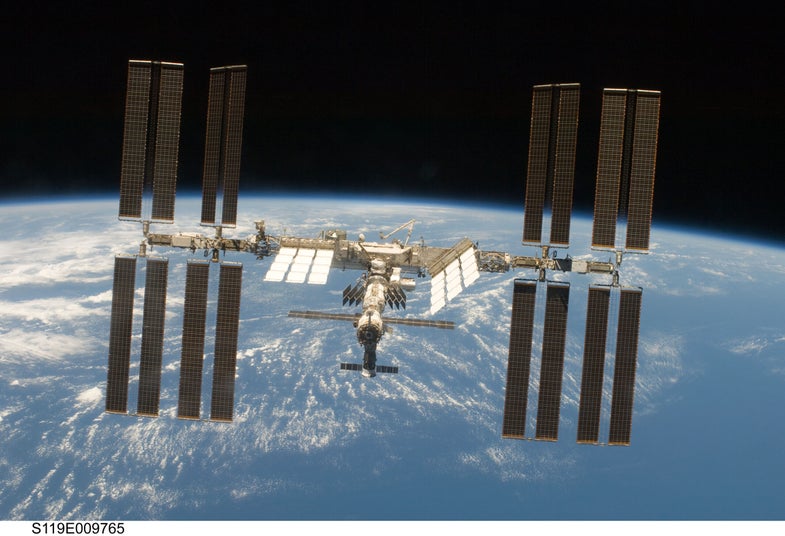The International Space Station Has Been Continuously Inhabited for Ten Years Today
Today marks the 10th anniversary of human habitation at the International Space Station, meaning that as of this week, humans...

Today marks the 10th anniversary of human habitation at the International Space Station, meaning that as of this week, humans have been living in space for more than two decades. That’s a pretty impressive statement when you think about it.
The ISS has been continuously lived in since Nov. 2, 2000, when Expedition 1 commander Bill Shepherd and flight engineers Sergei Krikalev and Yuri Gidzenko became the first residents. Since then, 200 explorers have visited, 15 nations have contributed modules and hardware, and more than 600 experiments have been conducted, according to NASA.
The ISS is by far the biggest man-made satellite to ever orbit Earth; it is easily seen with the naked eye, and its solar panels can be seen through an amateur telescope.
Last week, the ISS finally surpassed the former Soviet Union and then Russian space station Mir as the longest lived-in station. Mir was occupied for a total of 3,641 days, from Sept. 8, 1989 to Aug. 28, 1999, according to Roscosmos. A 15-month gap separated the end of space station Mir and the beginning of the ISS — were it not for that window, humans would have lived continuously in space since the first Bush administration.
The first space station, the US’ Skylab, didn’t last long — it was in Earth’s orbit from 1973 to 1979 and it was visited by crews just three times, in 1973 and 1974. Skylab was plagued with problems from the beginning; it was heavily damaged during launch, losing its micrometeoroid shield and one of its main solar panels. The US planned to launch a new station, Freedom, in the 1980s, but budget constraints nearly killed it. After the Soviet Union fell, President George H.W. Bush and Russian President Boris Yeltsin agreed to cooperate in space, and the ISS was born. It’s a compendium of five space agencies: NASA, the European Space Agency, the Russian Federal Space Agency, the Japan Aerospace Exploration Agency and the Canadian Space Agency.
Astronauts aboard the station are continually conducting experiments in several fields, including the effects of weightlessness on plants and animals; how fluids and materials behave in microgravity; and the long-term health effects of living in space.
But the ISS’ greatest achievements may be yet to come. In February, astronauts will install the Alpha Magnetic Spectrometer-02, designed to detect dark matter and uncover the secrets of the origins of the universe. The station is built to last through 2020, and beyond that, its future is anyone’s guess — it could be turned into a a base camp for expeditions to the moon or Mars, crew quarters for an asteroid mission, or it could become a huge piece of space junk.
In honor of 10 years, here are some of the ISS’ greatest hits and our fondest memories of our peaceful outpost in space.

ISS From Endeavour

Window on the World

Twitpics From Space

Space Sushi

Drinking Their Own Urine

Colbert Treadmill

Robonaut 2

Fixing the Pump

Aurora from ISS